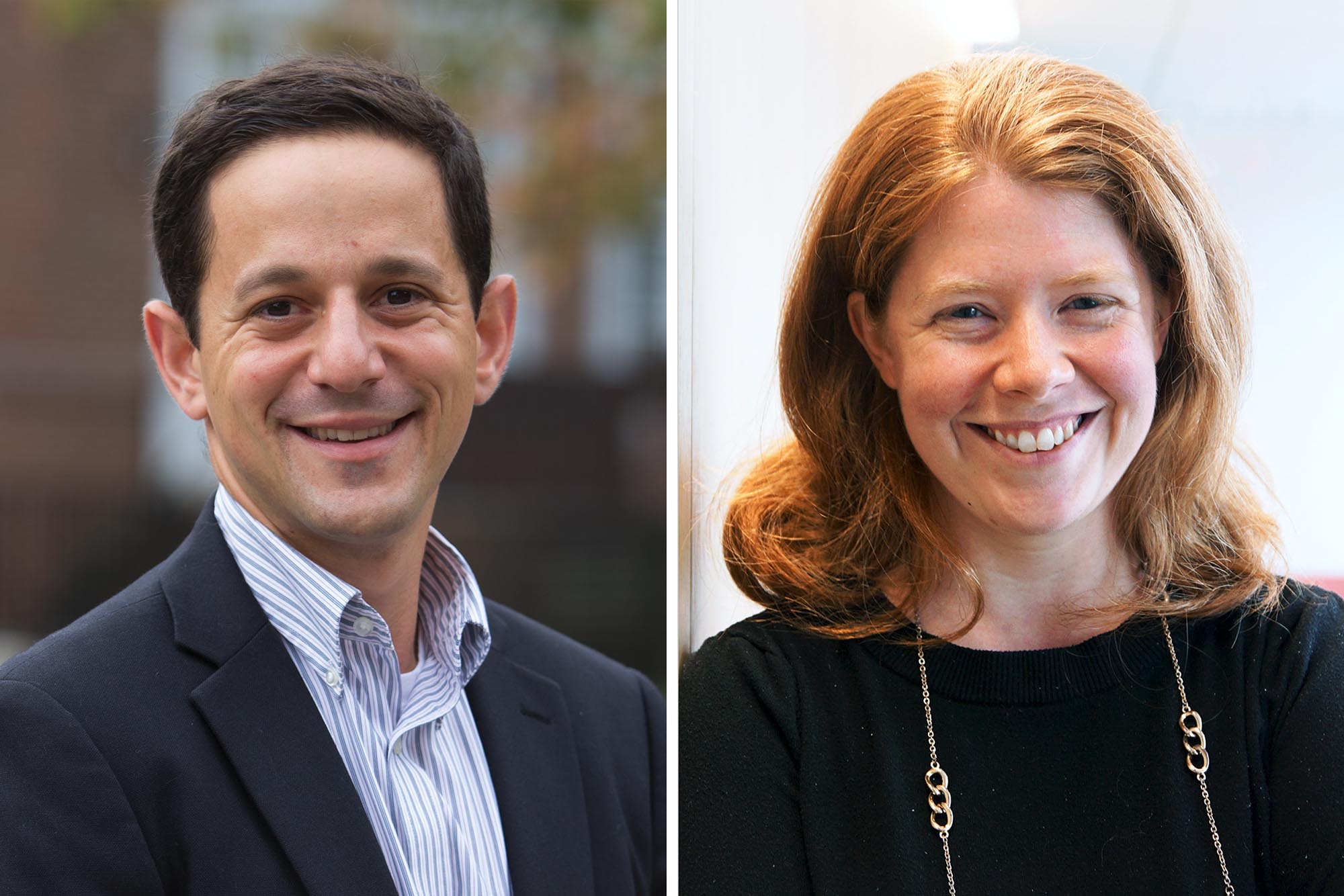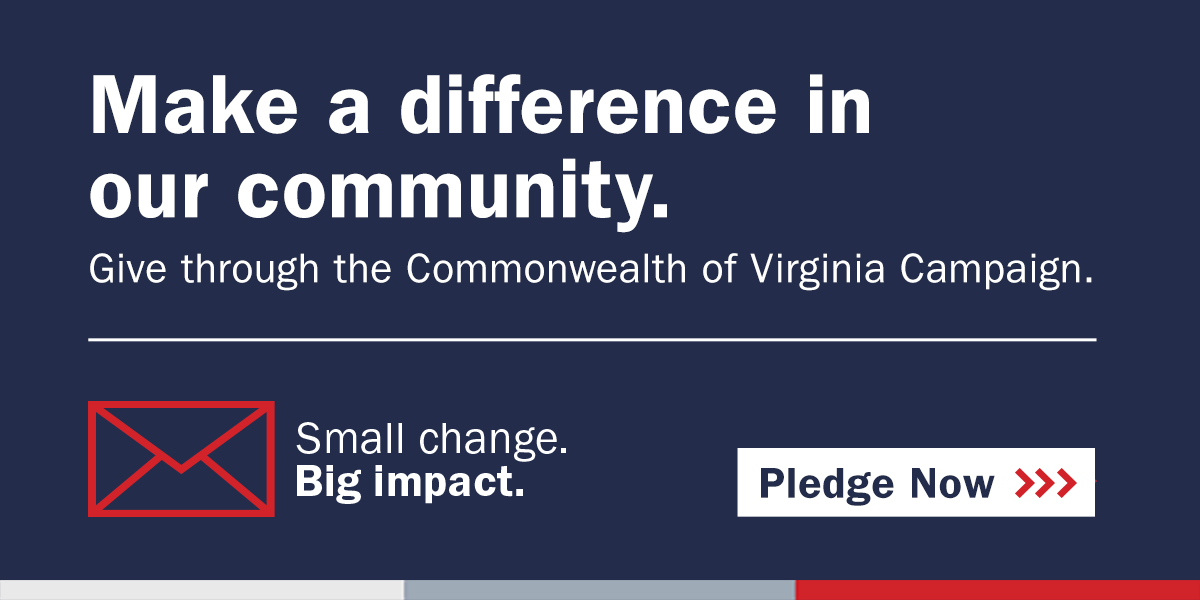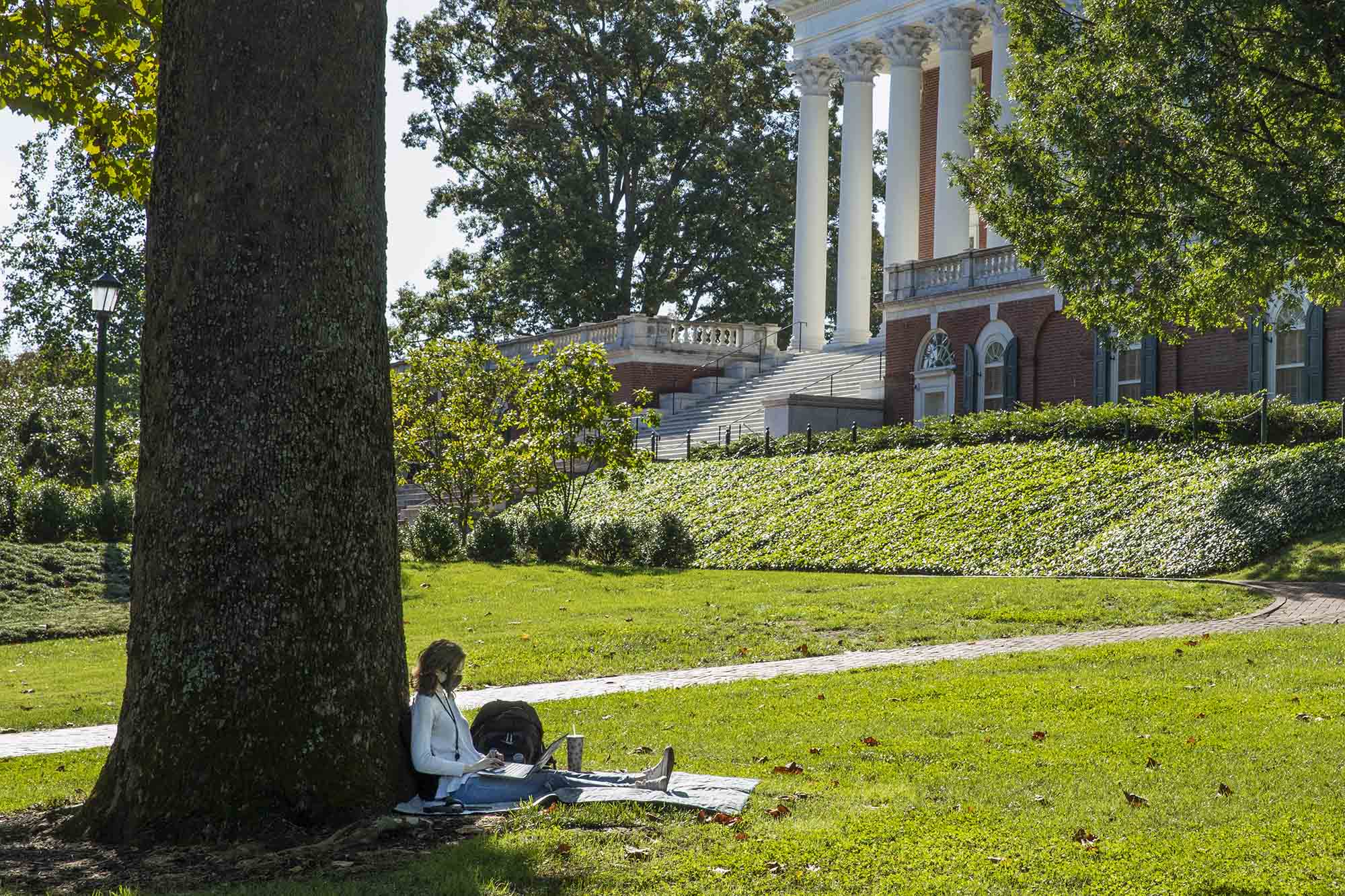The impact of “credential stacking” among community college students had long been of interest to Ben Castleman and Katharine Meyer, but they became even more curious about it during the pandemic.
With unemployment rising, the University of Virginia researchers wanted to be able to tell people how much income they could generate with an additional credential, and which job sectors were paying off the most.
Castleman, Meyer and colleague Kelli A. Bird studied students who graduated from the Virginia Community College System between 2009 and 2017.
In observing their employment through the end of 2019, they concluded that adults who return to community colleges to complete additional training or credentials see a 7% increase in their quarterly wages.
In a new paper, they also found that individuals who complete a second credential are four percentage points more likely to be employed than similar individuals who start, but don’t complete a stacked credential.

Ben Castleman and Katharine Meyer found that “stacking” in health and business paid off the most. (Photo by Sanjay Suchak, University Communications; contributed photo)
“Our hope,” Castleman and Meyer write in an email, “is that our findings on the benefits of stacking credentials reinforce policy and philanthropic efforts to support workers who have experienced job loss because of COVID to explore and pursue additional credentials that may strengthen their employment prospects in the post-COVID economy.”
UVA Today caught up with Castleman, who holds dual appointments in the School of Education and Human Development and the Frank Batten School of Leadership and Public Policy, and Meyer, a 2019 Ph.D. graduate of the School of Education currently pursuing post-doctoral studies at Brown University, to take a deeper dive.
Q. How would you, in very basic terms, define credential stacking, and why did you feel it was important to take a deeper dive into it?
A. Credential stacking is when an individual obtains two separate credentials over time – for example, graduating with a certificate in cybersecurity one spring, and then at a later date completing the information systems technology network engineer applied associate’s degree.
We’ve been interested in the impact of credential stacking for a while, given the rapid pace of change in the labor market and the necessity this creates for many workers to obtain additional training and credentials over the course of the career. The COVID-19 economic crisis, and the potential transformations to multiple sectors of the U.S. economy, make understanding the impact of stacking that much more timely and policy-relevant.
Q. Was the 7% increase in quarterly wages and rise of four percentage points in Virginia’s employment rate in the ballpark of what you expected to find?
A. We find it helpful to benchmark our findings with the existing research on the labor market benefits students get from earning their first credential. Going into the project, we thought the returns to a second credential would be more modest. When it comes to associate’s degrees, we find about half as big an impact of earning an associate’s as a second credential as studies have found for the first associate’s degree, which was our initial expectation.

But for short-term certificates – programs of study that are typically a few months long and very workforce-oriented – we found that the labor market benefit to a second certificate is about double the benefit of the first certificate.
This suggests that in certain fields, obtaining additional short-term training may enable workers to take on additional and more complex tasks – and in return, their compensation increases substantially.
Q. In which fields did obtaining credentials pay off the most?
A. We find high returns to stacking in health and business – about a 9% wage return in each.
The most common stack degree we see in health is a registered nursing associate degree, and the second-most-common is a short-term certificate in mental and social health services. These are programs that build specific skills in high-demand professions that pay well.
In business, stackers are most commonly stacking with a short-term certificate in business administration and operations. These are programs that teach more general skills than the health credentials, but skills that are also broadly applicable across professions and companies such as computer knowledge and may give stackers more flexibility in their career choices.
Q. What were your findings when you looked at credential stackers by gender and race? Did anything stand out?
A. Unlike previous studies of the returns to postsecondary education, we found relatively little difference in the returns to stacking for male and female graduates.
That being said, we found large differences in the returns to stacking for Black and white stackers overall, with larger benefits to white stackers. Digging deeper into the data, we find that within the fields of health and business, there are small to no significant differences in the stacking returns by race, and that the overall differences we observe are driven by differences in other fields in which students stack.
Q. In your paper, you discuss how policies that support stacking credentials could be a strategy to reduce racial and ethnic inequalities in educational attainment and labor market success. Can you explain how something like that might manifest?
A. Black workers have been disproportionately affected by the COVID-19 pandemic and recession. Not only were Black workers more likely to face immediate layoff, they have experienced lower levels of reemployment as businesses reopened.
Our research highlights that supporting Black workers to obtain stacked credentials, particularly in health and business fields, could offer a pathway to recoup employment and earnings losses from COVID.
Q. Seventeen states have allocated funding to colleges to develop “stackable credential pathways,” and 10 states require that their community college systems offer and advertise stacking options. How do the mechanics work here in Virginia?
A. Virginia has both legislation and funding to encourage the development of stack pathways, which plays out differently across the Virginia Community College System. In recent years, the governor’s proposed “G3” program – “get skilled, get a job, give back” – would have awarded funding to VCCS colleges to adapt existing programs and structure them to have a clearer stackable credentials pathway.
Some VCCS colleges have also highlighted stacking opportunities in conjunction with promoting the governor’s Re-Employing Virginians campaign, supported by Virginia CARES funding. These funds will support the enrollment of Virginians experiencing unemployment or underemployment as a result of COVID-19 to train in the high-demand fields of early childhood education, health care, information technology, manufacturing, public safety and skilled trades. These are fields where several colleges have stack opportunities for students and individuals could seamlessly return to school to advance their skills in the coming months.
Q. Looking into the future, what will you be most interested to see as it pertains to credential stacking?
A. Over the next few years, we hope to understand both how stackable credentials prepare individuals for labor market shocks such as the COVID-19 pandemic and ensuing recession, and what trends we can observe in whether more students are likely to return to college to attempt stacking in the face of economic uncertainty coupled with state investments in worker retraining.
We also include in our analysis a group of individuals who return to complete some credits, but not a second credential after their first graduation; further work might explore how to best support students in that category to actually complete the second credential.
Media Contact
Article Information
December 7, 2020
/content/researchers-shed-light-rewards-credential-stacking

